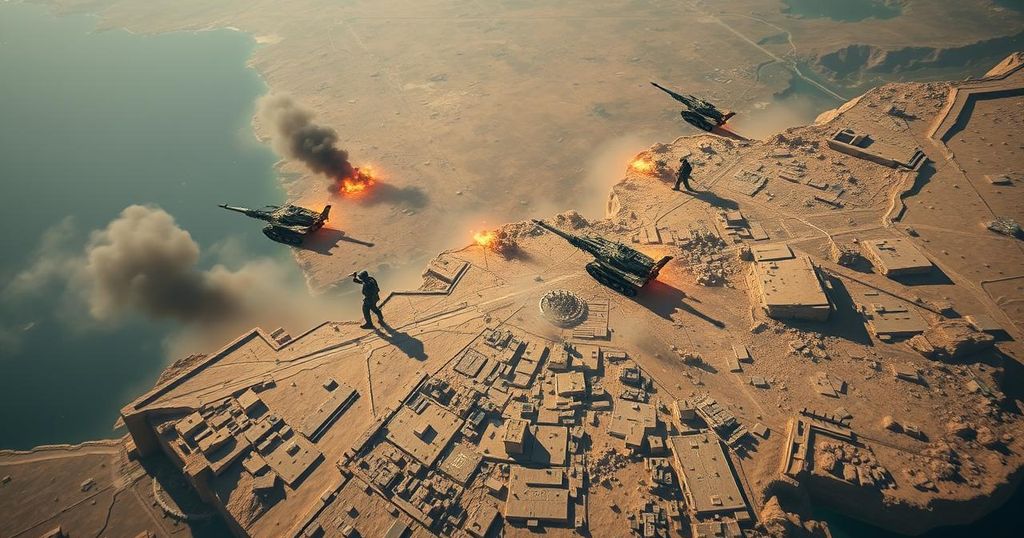US Military Action Against Iran-Backed Houthis and Escalating Middle East Tensions
The United States has conducted airstrikes against the Iran-backed Houthis in Yemen using B-2 stealth bombers for the first time amid rising regional tensions. Israeli forces have also clashed with UN peacekeepers in Lebanon, contributing to a humanitarian crisis affecting 1.2 million displaced individuals. Ceasefire talks for Gaza have stalled, while diplomatic relations between Israel and France deteriorate over military exhibitions. The geopolitical landscape remains precarious as preparations for potential escalations loom.
The United States has initiated airstrikes against the Iran-backed Houthis in Yemen, targeting five underground weapons storage facilities. This operation marks the first deployment of B-2 stealth bombers against the Houthis since escalated tensions in the region began approximately one year ago. The airstrikes were authorized by President Joe Biden, with Defense Secretary Lloyd Austin emphasizing the necessity to deter increasing attacks on civilians and U.S. regional allies, particularly Israel. In Southern Lebanon, Israeli forces have reportedly fired at a United Nations peacekeeping position, damaging a watchtower, which further raises concerns over the humanitarian situation in the region. Reports indicate that around 1.2 million individuals, including 400,000 children, have been displaced due to the ongoing violence related to Israel’s conflict with Hezbollah. The risk of cholera spreading in Lebanon has also been identified following the detection of the disease in northern areas. Tensions prompt critical dialogues as Israeli and French relations strain over diplomatic issues, particularly after France barred Israeli firms from showcasing at forthcoming defense exhibitions. Meanwhile, discussions regarding a ceasefire in Gaza and the potential release of hostages have stalled, with no communication reported in nearly a month. All developments occur amidst fears and preparations for anticipated Israeli retaliation against Iran following recent missile attacks. The U.S. maintains its strategic military presence in the region, with the use of its advanced B-2 bombers sending a significant message amid heightened confrontations associated with Iran, Israel, and its allies. The situation remains precarious as skirmishes between the U.S. and the Houthis continue, aggravating already dire humanitarian conditions in Lebanon and Gaza.
The ongoing conflict involving the Houthis in Yemen, Israel’s engagements with Hezbollah, and Israel’s war in Gaza reflects a compounded crisis in the Middle East exacerbated by regional power struggles. Iran’s backing of these groups aims to exert influence and challenge U.S. interests and ally positions in the region. The humanitarian toll of these military engagements has led to significant displacement and suffering among civilians, prompting international concern and calls for ceasefire negotiations. This situation has intensified the strategic military efforts made by the United States, signifying its commitment to regional allies like Israel.
In summary, the U.S. airstrikes against the Houthis represent not only a military action but a strategic position aimed at deterring Iran from further aggression against U.S. partners in the Middle East. The spiraling humanitarian crisis in Lebanon highlights the dire repercussions of ongoing conflicts, while stalled negotiations regarding Gaza underscore the complexities of achieving peace in such a volatile region. Continued vigilance from all parties is essential in addressing both the military and humanitarian facets of the crisis.
Original Source: www.cnn.com




Post Comment